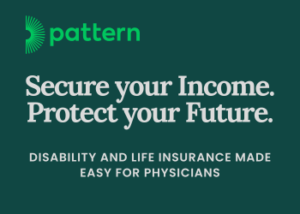by Larry Cohen
When Florida Governor Rick Scott recently signed legislation barring doctors from asking about gun safety practices in the homes of their child patients, it sounded the alarm that physicians’ roles in community prevention are chronically misunderstood. Rather than restricting doctors’ options for involvement in prevention, we should be supporting and expanding them.
Community prevention is the creation of physical and social environments that support safe, healthful lives so that people don’t get sick and injured in the first place. The term covers a diverse set of measures, ranging from macro-level policies like including more fresh foods in school lunches, to community-level solutions like designing streets that support bikers and pedestrians, or engaging youth in extracurricular activities to prevent violence or drug abuse. Part of the challenge for community prevention advocates is that these critical solutions have not been integrated into conversations on health care, though they have a huge impact on our health.
Studies indicate that behavior and environment account for roughly 70% of our health outcomes. Genetics account for 20% and medical care, 10%. Yet 96% of our national health expenditures are focused on medical care, with only 4% dedicated to prevention. We have learned that our growing medical expenditures are not helping to stem the rapid growth of chronic disease in America, the cost of these illnesses to our economy, or the burden of these illnesses on our health care system. Prevention is part of the answer.
Doctors are skilled and experienced in some kinds of prevention—immunizations, wellness exams, and early detection of illness through screenings like mammograms, to name a few. But physicians are also critical and natural allies in the fight for community prevention. In fact, the skills needed to engage in community change are closely aligned with the problem solving skills doctors currently employ to address individual health needs. With patients, physicians follow a three-part process: collect data (symptoms, vital signs, tests, etc.), diagnose the problem, and develop a treatment plan.
These same skills can be applied to communities if clinics collect data on local health trends, review them periodically to determine root causes, and then support efforts to improve those conditions. Innovative approaches like these are already in use at St. John’s Well Child and Family Center in Los Angeles, where doctors engaged in community change after noting an increase in illness and injury related to substandard housing conditions. The clinic collaborated with other community leaders to secure local administrative policies and agreements that have improved landlord compliance with housing standards.
Doctors at St. John’s and other pioneers recognize that in order to comply with “doctor’s orders,” patients need supportive places to live, work, learn, and play. It would be difficult for someone to take his recommended daily walk when the nearest park is in the next city and his local sidewalks are in disrepair. A working mother of two won’t find fresh vegetables at a local corner store, but what where else can she shop if no grocery stores will open in her neighborhood?
America has a proud and successful history of physicians spearheading primary prevention measures because Americans regard them as the foremost authorities on health. Tired of treating injured infants, Tennessee pediatrician Dr. Robert Sanders pioneered the child safety seat law that paved the way for all states to reduce death and injury from motor vehicle crashes. Doctors’ expert testimony also played an important role in passing regulations that have significantly decreased smoking since 1965. Doctors are on the front lines, and their vigilance and expertise are essential to bolstering community prevention and incorporating it into American healthcare.
So how can we create more opportunities for clinicians to engage with primary prevention? It must start early on in training our future doctors. Simple changes, like the case studies chosen for review, can expose medical students to prevention thinking without adding bulk to a full curriculum. Schools like the University of California, San Francisco already use case studies that profile the patient’s family and neighborhood, teaching students to identify social and environmental factors that contribute to the patient’s illness or injury. These readings can be supplemented with opportunities to attend community meetings to learn the social and environmental context of what they’re seeing in the clinic. When community advocates and physicians work together to expand the American definition of health care, we can better prepare to face current and projected challenges to our health and safety.
Larry Cohen is founder and Executive Director of Prevention Institute, a national non-profit dedicated to improving community health and equity through effective primary prevention: taking action to build resilience and to prevent illness and injury before they occur.
Submit a guest post and be heard on social media’s leading physician voice.





















![Breaking the cycle of sacrifice: from medical martyrdom to purposeful healing [PODCAST]](https://kevinmd.com/wp-content/uploads/Design-2-190x100.jpg)
